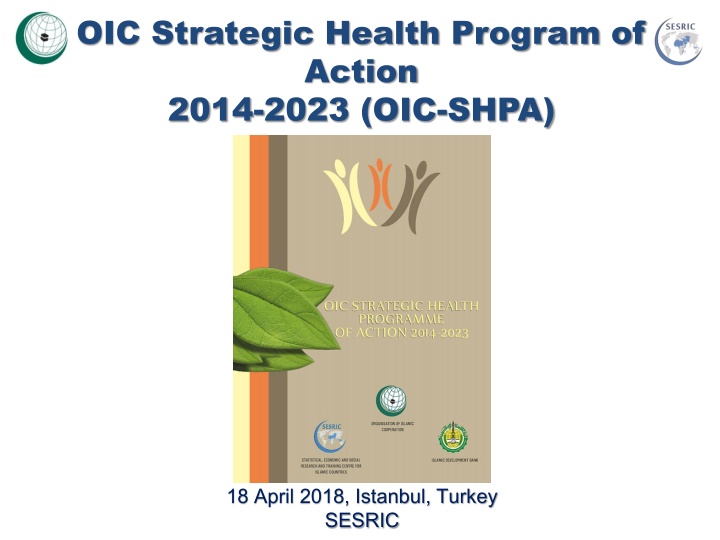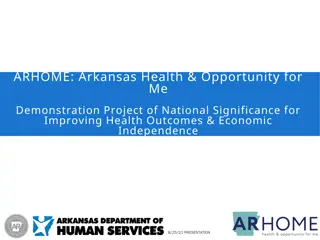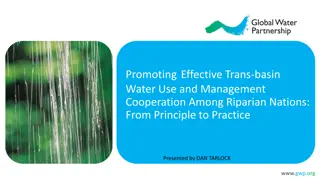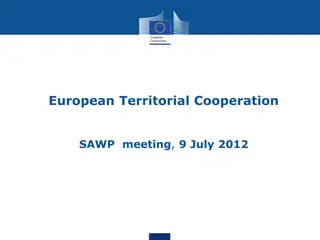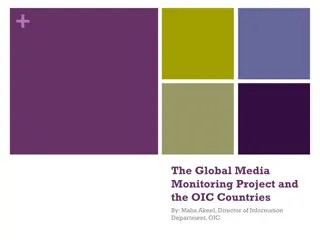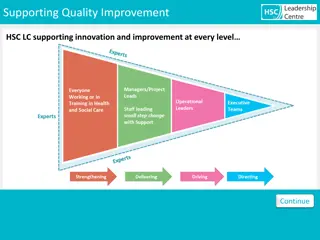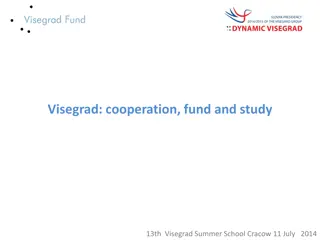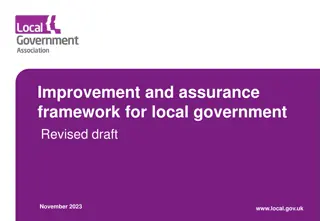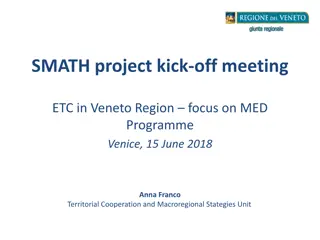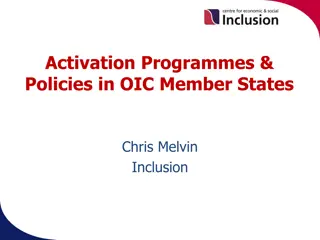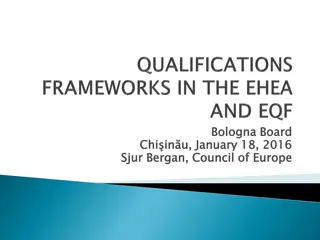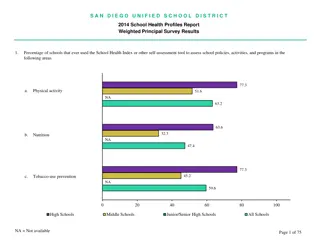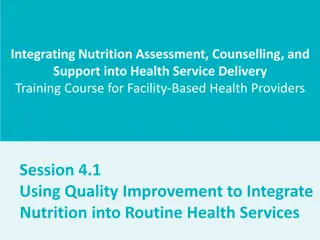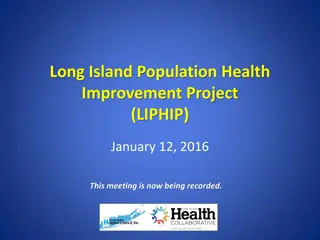OIC-SHPA 2014-2023: Framework of Cooperation for Health Improvement
Framework known as OIC-SHPA aims to enhance health care systems in OIC member countries through collaboration. It focuses on strengthening health systems, disease prevention, maternal and child health, medicine and technology, emergency response, and education and advocacy. The implementation plan includes proposed actions, timelines, key performance indicators, and partners for effective monitoring and execution.
Download Presentation

Please find below an Image/Link to download the presentation.
The content on the website is provided AS IS for your information and personal use only. It may not be sold, licensed, or shared on other websites without obtaining consent from the author.If you encounter any issues during the download, it is possible that the publisher has removed the file from their server.
You are allowed to download the files provided on this website for personal or commercial use, subject to the condition that they are used lawfully. All files are the property of their respective owners.
The content on the website is provided AS IS for your information and personal use only. It may not be sold, licensed, or shared on other websites without obtaining consent from the author.
E N D
Presentation Transcript
OIC Strategic Health Program of Action 2014-2023 (OIC-SHPA) 18 April 2018, Istanbul, Turkey SESRIC
Outline OIC HEALTH STRUCTURE OIC STRATEGIC HEALTH PROGRAMME OF ACTION (SHPA)
OIC-HEALTH STRUCTURE Islamic Conference of Health Ministers ICHM Steering Committee on Health SCH Lead Country Coordinators Group LCCG Indonesia Saudi Arabia LCC 3 Turkey Bahrain Sudan Morocco Malaysia LCC 4 LCC 1 LCC 2 LCC 5 LCC 6 Medicines, Vaccines and Medical Technologies Thematic Area 4 Maternal, New- born and Child Health, and Nutrition Emergency Health Response and Interventions Information, Research, Education and Advocacy Disease Prevention and Control Health System Strengthening Thematic Area 1 Thematic Area 2 Thematic Area 5 Thematic Area 6 Thematic Area 3
OIC Strategic Health Programme of Action (OIC-SHPA) 2014-2023
WHATS OIC-SHPA 2014-2023? A framework of cooperation among OIC member countries, relevant OIC institutions and international organizations in the domain of health; Aims to strengthen health care delivery system and improve health situation in OIC member countries especially by facilitating and promoting intra-OIC transfer of knowledge and expertise; Adopted by the 4th Session of the Islamic Conference of Ministers of Health held in Jakarta on 22-24 October 2013 5
OIC-SHPA 2014-2023 1- Health SystemStrengthening ThematicAreas of Cooperation 2- Disease Prevention and Control 3- Maternal, New-born and Child Health and Nutrition 4- Medicine, Vaccine and Medical Technologies 5- Emergency Health Response and Interventions 6- Information, Education, Research and Advocacy
WHATS IMPLEMENTATION PLAN OF OIC-SHPA? Describes proposed actions/activities under each of the 6 TA Defines TIMELINE for implementation (short, medium and long term) Identifies Key Performance Indicators (KPIs) to monitor the implementation Proposes Implementing Partners (both national and international institutions) 7
THEMATC AREA 1: Health System Strengthening
Life expectancy at birth has increased by 5 years between 1990 and 2013 1990 2013 5.8years 80.8 75.3 70.8 70.1 66.3 64.9 63.9 60.5 OIC Non-OIC Developing Developed World Between 1990-2013 average LEB has increased from 60.5 years to66.3 years in OICcountries. However, OIC countries are still lagging behind the world by 4.5years and non-OIC developing countries by 3.8 years. Source: World Bank, World Development Indicators2015
Comparatively low financing for health (2000 (2000- -2013) 2013) 12.6 2000 2013 10.1 10.0 9.1 6.4 5.5 4.4 3.9 OIC Non-OIC Developing Developed World OIC countries spent only 4.4% of GDP on health sector compared to10.0% in the world and 6.4% in non-OIC developing countries. Source: WHO Data Repository2015
Heath workforce just above the crisis level (2007-2013*) Physicians Nurses and midwives Threshold 86 31 27 17 32 15 14 8 OIC Non-OIC Developing Developed World There were only 25 health personnel (physicians, nurses and midwives) per 10,000 people in OIC countries compared to 41 in Non- OIC Developing countriesand 46 healthpersonnelin the world. Only 27 members meet the critical threshold of 23 health personnel per 10,000people. Source: WHO Data Repository2015
Low availability of health infrastructure (2013) OIC Non-OICdeveloping World 28 24.4 24 20 14.8 16 12 6.7 8 2.9 2.1 4 1.6 1.5 1.3 0.9 0 Health posts Health centres Hospitals Health care facilities are critical components of an efficient and effective healthcare system. With 6.7 health posts and less than one district, provincial and specialized hospital per 100,000 people, OIC countries are lagging behind the world and non-OICdeveloping countries Source: WHO Data Repository2015
Thematic Area 1: Health System Strengthening Selected actions and activities from Implementation Plan Facilitate knowledge exchange and co-production of new knowledge among member countriesthrough joint capacity building programmes. Review and upgrade the current status of the national health information system and its keyelements. Conduct assessment based on balance between production of health manpower and their deployment and utilizationby the health system. Start prepayment and risk pooling based health financing schemes to overcome financial barriers to health care access especially in rural areas.
THEMATC AREA 2: Disease Prevention and Control
Bulk of U5 deaths caused by preventable diseases and complications (2013) Others 100% 19% 20% 20% 90% 20% Congenital anomalies Sepsis 80% 6% 7% 8% 15% 7% 7% 70% 7% 4% 11% Birth asphyxia 12% 60% 12% 9% 50% 15% Prematurity 17% 19% 18% 40% 6% Injuries 6% 6% 30% 7% 16% 15% Pneumonia 15% 11% 20% 11% 7% 5% 7% Malaria 10% 9% 9% 9% 7% 0% Diarrhoea OIC Non-OIC Developing Developed World Pneumonia and prematurityare the top-2 causes of under five deaths 43% of under-five deaths in OIC countries caused by three infectious diseases: pneumonia/sepsis (23%), malaria (11%), and diarrhea (9%) Source: WHO Data Repository 2015 15
Thematic Area 2: Disease Prevention and Control Selected actions and activities from Implementation Plan Promote and organize (or support existing) cost effective community awareness programs about preventive measures and the treatment methods. Implement programs that tackle the social determinants of diseases i.e. health in early childhood, health of urban poor, fair financing and equitable access to primary health care services; access to clean water, improvedsanitation and hygiene services. Takesteps on ratificationof WHO FCTC,if not done so, and improve the implementation of all MPOWERmeasures. Establish capacity building networks among the Disease Control and Prevention Centres/Institutions, including for mental health and substance use,in the membercountries.
THEMATC AREA 3: Maternal, New-born and Child Health and Nutrition
Impressive decline in maternal mortality between 1990 and 2013 44% Between 1990 an 2013, MMR per 10,000 live births declined by 44% in OIC countries. Source: WHO Data Repository2015
Infant mortality declined remarkably between 1990 and 2013 44% 84 63 62 47 1990 34 31 2013 OIC Non-OIC Developing World Between 1990 an 2013, IMR per 1000 live births declined by 44% in OIC countries. Still one in every 21 children dies before their first birthday in OIC countries compared to one in 30 children in theworld. Source: WHO Data Repository2015
Significant births still taking place without skilled assistance (2008-2012*) Births Attended by Skilled Health Personnel (%) 94% 90% 85% 70% 67% 62% 50% 39% OIC Non-OIC Developing World EAP ECA MENA SA SSA 38% of total births are still taking place without receiving any assistance and care from skilled health personnel in OIC countries Situation is critical in South Asia and Sub-Saharan Africa where un- attended births stands at 60% and 55% respectively Source: WHO Data Repository 2015 20
Thematic Area 3:Maternal, New-born and Child Health & Nutrition Selected actions and activities from Implementation Plan Develop home-based maternal, newborn and child care programmes based on successful models of community health workers depending on the needs and realities of each country. Improve awareness of women, families and communities about maternal and child life saving practices and existing services. Promote capacity building and disseminate best practices and lessons learned in the member countries in access to skilled health personnel duringchildbirth. Support availability micronutrients. public-private of partnerships foods to improve with the key staple enriched
THEMATC AREA 4: Medicines, Vaccines, and Medical Technologies
Thematic Area 4: Medicine, Vaccine and Medical Technologies With respect to production and supply of medicines, vaccines and medical technologies, OIC countries are characterised by low production capacities and rely heavily on imports to meet their domestic demand. In 2013/14, 23 out of 48 OIC countries (48 per cent) have a health technology national policy. However, 25 countries (52 per cent) do not have any.
Thematic Area 4: Medicine, Vaccine and Medical Technologies Selected actions and activities from Implementation Plan Facilitate training among member countries through sharing of knowledge and expertise for the development and strengthening of pharmacovigilance system. Improveinvestmentclimate by simplifying the requirements fordoing businessin pharmaceuticaland other medical products industry. Establish an intersectoral intra-OIC committee of experts on local production. Facilitate development of OIC regional pooled procurement mechanism which will enable local production to meet regional needs and allow for the mutual cooperation in increasing the availability of essential medicinesandvaccines.
THEMATC AREA 5: Emergency Health Response and Interventions
Thematic Area 5: Emergency Health Response & Interventions In 2015, 30 of 50 conflicts recorded worldwide occurred in OIC countries. As a direct outcome, today OIC countries account for 61.5% of all displaced population in the world with more than 25 million displaced people. Natural disasters during the last four decades have witnessed a steeper upwards trend inside OIC countries, significantly increasing from around 681 recorded incidents in the 1990s to 1,747 in the 2000-2016.
Thematic Area 5: Emergency Health Response & Interventions Develop all hazards national policies and programmes on risk reduction and emergencypreparedness in the healthsector. Support the synergy of Public-Private Partnership for community empowerment in the field of disastermanagement. Establish a centralizedhealth information system for timely reporting of deaths,diseases, and emergencyhealth logistics. Facilitate interregional partnerships and fund-raising for country-based capacity-building in the field of emergency health preparedness and response by supporting regional solidarity funds for emergency response. Establish OIC regional early warning and response mechanisms to prevent cross-borderdiseaseoutbreaks.
THEMATC AREA 6: Information, Education, Research and Advocacy
Thematic Area 6: Information, Education, Research & Advocacy As of 2006 data, four OIC countries: Iran, Turkey, Pakistan and Indonesia were ranked among the top-20 countries with the most active medical schools. On the other hand, there was only one active medical school in Guinea Bissau, Gabon and Surinam. Many OIC countries, especially those situated in the Sub- Saharan Africa, suffer from insufficient number of health professionals. Many OIC countries are suffering from the poor level of health information and awareness. The situation is particularly critical in low income countries where many myths and taboos prevail, which lead to the low usage of health care services that are critical for the healthy survival of people.
Thematic Area 6: Information, Education, Research & Advocacy Selected actions and activities from Implementation Plan Develop national strategy to promote disease prevention and healthy life styles involving all concerned partners. Secure IFA fatwa for all types of immunizations in OIC member countries and translate and disseminate this fatwa in local languages to address religiousconcernsregarding vaccination. Launch a tailor made OIC community health awareness programs for the clerks(imams). Establish a network of OIC health centers of excellence to promote harmonization of health care education and practices across OIC membercountries.
